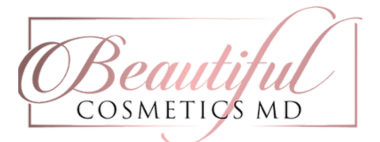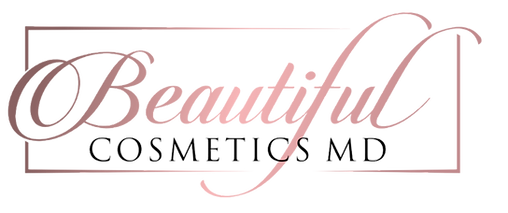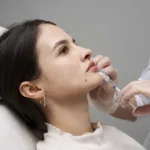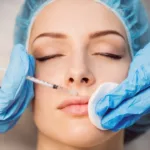How long after Botox can you workout?: Engaging in regular exercise is a pivotal component of a healthy lifestyle. However, for those embracing the rejuvenating effects of Botox, understanding the timeline for safely resuming physical activity is crucial. Let’s dive into the essential knowledge needed to protect your investment in your appearance while maintaining your fitness regimen.

What Exactly Is Botox?
Botox, a widely recognized name for Botulinum Toxin, plays a dual role as a unique agent in both the aesthetic and medical industries. This neurotoxin is expertly injected into certain muscles to temporarily hinder the signal for muscular contraction, inducing a relaxed state. The result? A smoothing effect on wrinkles, drastically reducing existing ones and preventing the formation of new lines.
Botox’s versatility is demonstrated by the fact that its uses extend beyond both cosmetic enhancement and medical intervention. Although it is highly praised for its anti-aging properties, it is also given for ailments like temporomandibular joint problems and persistent migraines.
The Crucial Waiting Period After Botox: When Can You Hit the Gym?
The prevailing recommendation is that patients should refrain from engaging in physical exertion for at least 24 to 48 hours post-Botox. Why the wait? This period allows the Botox to settle into the treated muscles without interference. However, it’s paramount to consult with your healthcare provider or the specialist who performed the Botox procedure for tailored advice.
Weightlifting After Botox: Is It Safe?
Intensive workouts, especially those involving heavy lifting or high resistance, can hike your blood pressure and magnify blood flow. This surge may interfere with how Botox anchors itself, potentially increasing the likelihood of bruising at the injection sites. Additionally, certain facial expressions and straining linked with weightlifting could inadvertently target muscles treated with Botox.
The Risks of Premature Exercise After Botox: What Could Go Wrong?
Leaping into exercise too soon after your procedure can influence both the outcome and augment potential complications:
Botox migration
Exercise may cause unintended redistribution of Botox, leading to possible muscle weakness or paralysis in undesired areas and an aesthetic mismatch.
Diminished effectiveness
Strenuous activity elevates blood circulation, which can dilute the impact of Botox, compromising its cosmetic intent.
Increased bruising or swelling
High-intensity workouts can catalyze elevated bruising or swelling, prolonging recovery and potentially altering results.
Pain and discomfort
Post-Botox workouts might exacerbate pain or soreness and can elevate any temporary side effects due to increased blood flow.
While fitness is a cornerstone of well-being, adhering to post-treatment guidance is as vital to ensure an optimal Botox experience. Temporarily adjusting your workout schedule and heeding professional recommendations can offer a harmonious balance between your cosmetic goals and health pursuits.
Expert Tips: How to Navigate Your Post-Botox Workout Plan
To maximize outcomes and ensure a complication-free experience, consider these tips:
- Choose Light Activities: Opt for gentle exercise like walking or yoga initially.
- Monitor Your Body: Pay close attention to how your face and body feel during and after exercise.
- Maintain Communication: Keep your healthcare provider in the loop regarding any concerns.
FAQs: How Long After Botox Can You Workout?
1. What is Botox, and how does it work?
Botox is a widely recognized name for Botulinum Toxin, used in both aesthetic and medical fields. It is injected into specific muscles to temporarily hinder signals for muscular contraction, resulting in a relaxed state and reducing wrinkles.
2. When can I resume working out after getting Botox?
It is generally recommended to refrain from physical exertion for at least 24 to 48 hours post-Botox. This waiting period allows the Botox to settle into the treated muscles without interference. However, individual advice from your healthcare provider is crucial.
3. Is weightlifting safe after Botox?
Intensive workouts, especially those involving heavy lifting, may increase blood pressure and interfere with how Botox settles. This could potentially lead to bruising at injection sites and affect the treated muscles.
4. What are the risks of exercising too soon after Botox?
Premature exercise can lead to Botox migration, diminished effectiveness, increased bruising or swelling, and heightened pain or discomfort. Following post-treatment guidelines is essential to avoid these complications.
5. How can I navigate my post-Botox workout plan?
Choose light activities initially, monitor your body’s response, and maintain communication with your healthcare provider regarding any concerns.
6. What are expert tips for a complication-free post-Botox experience?
Choose light activities, monitor your body, and maintain communication with your healthcare provider to address any concerns promptly.
The Bottom Line: Balance and Patience Post-Botox
While exercising post-Botox does require precaution, it does not mean a prolonged sedentary lifestyle. By recognizing the importance of the waiting period and making smart fitness choices, you can enjoy both the benefits of a robust workout regimen and the aesthetic enhancements of Botox.
Incorporating Tailored Fitness Strategies Post-Botox
After acknowledging the need for a brief hiatus from vigorous workouts post-Botox, it becomes essential to curate a tailored fitness strategy that respects the boundaries set by your cosmetic procedure while still honoring your commitment to fitness. Here’s how to chart a course back to your full workout routine without jeopardizing the results of your Botox treatment.
Gradual Reintroduction to Cardiovascular Exercises
When resuming cardio workouts, start slow. Choose low-impact options like elliptical training or swimming that won’t excessively increase blood pressure or lead to strenuous facial movements. Gradually increase your pace and intensity over several days, being mindful not to rush the process.
Strength Training Considerations
For those who participate in strength training, it’s advisable to focus initially on lower-body exercises that do not involve using the upper body in a manner that places stress on facial muscles or the injection site. This might be an opportune time to improve leg strength or flexibility until it’s safe to fully reengage your upper body.
Hydration and Skin Care Post-Workout
Staying well-hydrated and following a consistent skincare regimen are key. Your skin needs hydration to complement the Botox treatment, and sweating during your workout makes replenishing fluids even more crucial. Moreover, a gentle cleanse post-workout helps to keep your pores clear without subjecting your skin to undue stress.
Mindful Nutrition to Support Recovery
In connection with a balanced workout routine, your diet has a significant role in your Botox aftercare and overall health. Healing can be boosted and skin health supported by concentrating on foods that are rich in antioxidants, omega-3 fatty acids, and vitamins. Among the recommended ones include berries, leafy greens, nuts, and fatty fish.
Final Thoughts: Listening to Your Body and Your Provider
Always remember, your body sends you signals. If you experience anything out of the ordinary or if discomfort persists, inform your medical specialist promptly. And before you embark on your post-Botox fitness journey, ensure you receive a comprehensive rundown of dos and don’ts from your provider.
Your dedication to fitness and your beautification endeavors can coexist seamlessly, with the right planning and care. Just like a well-choreographed dance, the steps to reintroduce exercise after Botox should be taken with both grace and precision.
For personalized, professional advice on your post-Botox regimen, or to learn more about maintaining a balance between beauty treatments and an active lifestyle, contact us or leave a comment below. We’re here to guide you to the best version of yourself, inside and out.










